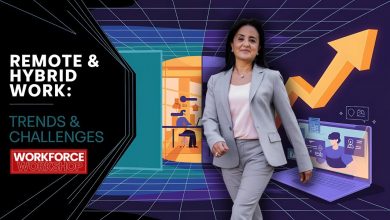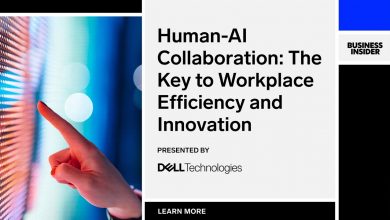Why Rigid RTO Mandates Cost More Than They Save
By focusing on outcomes and leveraging technology, companies can save more and thrive in a future where flexibility and employee well-being define success, rather than being tethered to outdated office-centric models.
 The Forbes article “Why Rigid RTO Mandates Cost More Than They Save” written by Solange Charas argues that rigid return-to-office (RTO) mandates often lead to financial and operational losses that outweigh their intended savings, particularly when viewed through the lens of enabling the future of work.
The Forbes article “Why Rigid RTO Mandates Cost More Than They Save” written by Solange Charas argues that rigid return-to-office (RTO) mandates often lead to financial and operational losses that outweigh their intended savings, particularly when viewed through the lens of enabling the future of work.
Charas critiques the binary framing of remote versus in-office work by executives, highlighting how such mandates fail to adapt to modern workforce dynamics and technological advancements, ultimately undermining the potential for a more efficient, flexible, and employee-centric workplace.
The article emphasizes that rigid RTO policies, often driven by a desire to utilize existing office spaces and avoid “wasted” real estate costs, overlook significant hidden expenses. These include declining productivity, increased employee attrition, and a competitive disadvantage in talent acquisition.
Charas cites evidence, such as a Stanford study showing hybrid workers are 9% more productive than fully in-office staff, and Gallup data indicating over 50% of managers would quit if forced to work full-time in the office. These findings underscore that flexibility, not enforced presence, aligns with the future of work by boosting engagement and performance.
Charas, alongside co-author Stela Lupushor, quantifies the costs of RTO mandates, revealing that savings from reduced real estate are dwarfed by losses in human capital.
For instance, the article references McKinsey’s projection of a 13% decline in office space demand by 2030, suggesting that clinging to physical office mandates ignores evolving market trends. Instead, investments in AI-driven tools and hybrid work models—shown to increase productivity by up to 40% per an MIT study—enable a digital-first approach that treats employees as valuable assets rather than mere occupants of office space.
The theme of enabling the future of work is central to Charas’ argument. She advocates for a hybrid, experience-driven workplace that prioritizes collaboration over attendance, citing Atlassian’s success in reducing office space by 50% while maintaining productivity through intentional in-person interactions.
This approach contrasts with rigid mandates, which she sees as a shortsighted attempt to justify sunk costs rather than fostering innovation and adaptability. By focusing on outcomes and leveraging technology, companies can save more and thrive in a future where flexibility and employee well-being define success, rather than being tethered to outdated office-centric models.
Hybrid Work
Hybrid work models blend in-person and remote work, offering a flexible framework that adapts to employee needs, organizational goals, and evolving workplace trends. These models have gained prominence as companies navigate post-pandemic realities, balancing the benefits of collaboration in physical spaces with the autonomy and efficiency of remote work.
What Are Hybrid Work Models?
Hybrid work models allow employees to split their time between working from home (or other remote locations) and the office, depending on tasks, team needs, and personal preferences. Unlike fully remote or fully in-office setups, hybrid approaches aim for a “best of both worlds” solution. Common structures include:
- Fixed Hybrid: Employees work a set number of days in the office (e.g., 2-3 days per week) and the rest remotely. Example: Microsoft’s policy of 50% in-office time unless otherwise approved.
- Flexible Hybrid: Employees and managers decide when office presence is needed, often tied to specific projects or collaboration needs. Atlassian’s model, as noted in Charas’ article, emphasizes intentional in-person time over mandatory schedules.
- Task-Based Hybrid: Office days are reserved for collaborative work (e.g., brainstorming, training), while remote days focus on individual tasks. Google’s “collaboration hubs” exemplify this.
- Employee Choice: Workers have significant autonomy to choose their in-office frequency, with guardrails to ensure team alignment. This aligns with Charas’ push for employee-centric flexibility.
Benefits of Hybrid Work Models
Hybrid models align with enabling the future of work by leveraging technology and prioritizing outcomes over presence. Key advantages include:
- Increased Productivity: Studies cited by Charas, like Stanford’s finding of 9% higher productivity among hybrid workers, show that flexibility enhances focus and output. MIT’s research also notes up to 40% productivity gains with AI tools in hybrid setups.
- Cost Savings: Companies can reduce real estate footprints—Atlassian cut office space by 50%—while avoiding the full overhead of traditional offices, countering the sunk-cost fallacy of rigid RTO mandates Charas critiques.
- Talent Retention and Attraction: Gallup’s data (over 50% of managers would quit over full-time RTO) highlights that flexibility retains talent. Hybrid models appeal to a workforce valuing work-life balance.
- Collaboration Without Burnout: Intentional in-office time fosters innovation—Google’s hubs or Atlassian’s “team anywhere” approach—while remote days prevent the exhaustion of daily commutes.
Sustainability: Fewer commutes lower carbon footprints, aligning with corporate ESG goals.
Challenges of Hybrid Work Models
Despite their promise, hybrid models face hurdles:
- Equity Issues: Remote workers might miss out on informal networking or promotions compared to in-office peers, creating a “proximity bias.” Companies like Slack use virtual-first policies to mitigate this.
- Coordination Complexity: Scheduling team collaboration across hybrid schedules requires robust tools (e.g., Zoom, Asana) and clear communication norms.
- Cultural Disconnect: Less frequent in-person interaction can weaken company culture unless offset by deliberate team-building, as Atlassian does with periodic gatherings.
- Tech Investment: Hybrid success demands reliable digital infrastructure—AI-driven analytics, cloud platforms—which Charas notes some firms underfund in favor of office upkeep.
- Management Resistance: Leaders accustomed to overseeing staff in-person may struggle with outcome-based oversight, a shift Charas argues is essential for the future of work.
Real-World Examples
- Atlassian: As highlighted in the Forbes article, Atlassian reduced office space by 50% and uses a “Team Anywhere” model, where in-person time is for bonding and brainstorming, not daily work. Productivity remains high due to tech-enabled remote collaboration.
- Google: Introduced “flexible work weeks” in 2021, with employees in the office 3 days for collaboration and 2 days remote, supported by redesigned “hubs” for teamwork.
- Salesforce: Its “Success from Anywhere” model lets employees choose full-remote, hybrid, or office-based roles, with 75% opting for hybrid in 2023 surveys, reflecting demand for choice.
- PwC: Offers a “flexible by design” approach, where staff average 2-3 office days weekly, tailored to client and team needs, backed by $300 million in hybrid tech investments.
Enabling the Future of Work
Hybrid models embody Charas’ vision of a digital-first, experience-driven workplace. They reject the binary RTO mindset she critiques, instead using technology—AI tools, virtual platforms—to optimize workflows and treat employees as assets, not office fixtures.
McKinsey’s forecast of a 13% office space decline by 2030 supports this shift, as does the growing adoption of hybrid policies (70% of U.S. firms per a 2024 Gartner report). The key is intentionality: hybrid succeeds when office time has purpose (collaboration, culture) and remote time is empowered (tools, trust).
Conclusion
Hybrid work models offer a pragmatic path forward, balancing flexibility with connection. They address Charas’ core argument—rigid RTO costs more than it saves—by cutting real estate waste, boosting productivity, and retaining talent. Success hinges on execution: companies must invest in tech, train managers for remote oversight, and design schedules that prioritize outcomes over optics.
As the workplace evolves, hybrid models aren’t just a compromise—they’re a blueprint for a future where work adapts to people, not the other way around.



